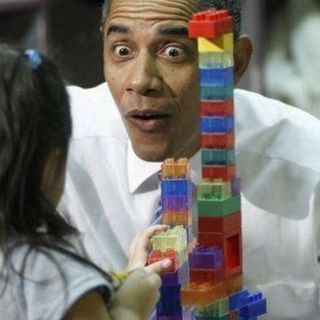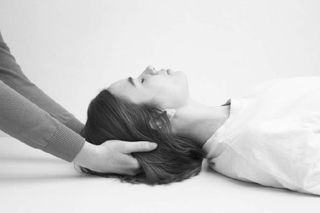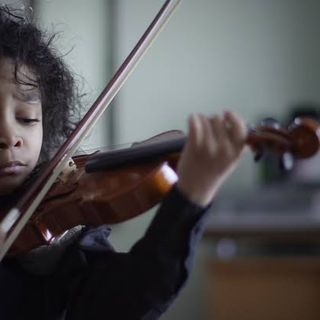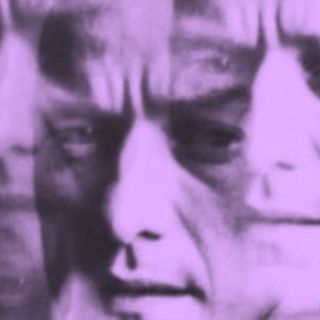
Untrending: Reiki Works — If You Have Faith
Reiki is a form of energy healing, essentially the Asian version of the ancient Christian practice of faith healing.

In Untrending, we side-eye the latest fads so we know what we’re getting ourselves into — and what (if anything) we’re getting out of them.
Reiki is a Japanese method of energy healing whose practitioners claim they can increase the well-being of a patient by transferring ‘life energy’ called qi (transliterated at chi in Chinese and ki in Japanese) through their hands placed just off the patient’s body or lightly touching it. No longer relegated solely to martial arts movies, this form of qi-healing is now offered as complementary and alternative medicine by leading medical hospitals and research institutions ostensibly devoted to science-based medicine, including Harvard University, Yale Univerity, Stanford Medical Center, and John Hopkins Hospital.
You’d think there’d be a sufficient number of studies and clinical trials vouching for the efficacy of Reiki for such premier institutes to buy into the trend — but you’d be surprised. Existing research on Reiki consists of poorly controlled studies with very small sample sizes that seem more designed to justify Reiki than to see if it actually works. One meta-analysis of all studies concluded that “the existing research does not allow conclusions regarding the efficacy or effectiveness of energy healing. Future studies should adhere to existing standards of research on the efficacy and effectiveness of treatment.”
Critics (and believers) will argue that trying to fit Eastern medicine into the rigid framework of Western science is essentially flawed; that science was not designed to be able to gauge or measure the impact of ancient Asian techniques like Reiki. And, yes, agreed. Reiki, at its core, is a spiritual practice, like meditation, and just because its mechanisms aren’t provable by medical science doesn’t mean it has no effect. But if practitioners of Reiki insist on increased assimilation of the alternative practice into rigorously tested and science-based medical care systems as formal medical interventions, then Reiki must fulfill the same criteria as any other new pill or practice must before it gets approved as fit to be disseminated to the public. And it doesn’t.
Reiki as a placebo
Where there is a discussion about Reiki’s effectiveness in studies, there is necessarily talk of placebo. A placebo is basically a negative control in clinical trials — it’s a medically inert substance or technique, administered exactly like the drug or treatment being tested, without the patient’s knowledge (but with the patient’s consent) of whether they are receiving the real deal or just the placebo. The placebo effect is said to have taken place when a patient feels better after even receiving the placebo.
A 2011 study, designed as well as a study for a pill would be, compared treatment by a Reiki practitioner was compared to a Reiki placebo (that is, when someone not trained in Reiki ‘performs’ Reiki) and to usual care (no intervention). Researchers found that while patients reported better well-being in response to both the real Reiki and the sham Reiki, compared to no intervention, they were unable to distinguish one from another. This means Reiki did not do better than a placebo, which further implies that Reiki doesn’t work, going by the standards of science-based medicine.
Interestingly, the authors of the 2011 study concluded: “The findings indicate that [Reiki] during chemotherapy was influential in raising comfort and well-being levels, with or without an attempted healing energy field.” Notice how they didn’t say, “Reiki doesn’t work.” Instead, the researchers concluded (as do most who attempt to prove Reiki works) that if both real and sham Reiki are better than no intervention, then Reiki works, even if it’s ‘working’ is merely a placebo effect. This is a pattern across Reiki studies: the intention of the study comes across more like a justification of pre-supposed outcomes than an objective exploration of outcomes. No wonder then that a 2017 meta-analysis of clinical trials concluded that Reiki ‘works.’
Related on The Swaddle:
Untrending: There Is No Scientific Evidence Steaming Your Vagina Cleanses It
The effect of compassion and care
Reiki-advocates — some even within the scientific community — argue that Reiki is more than just a placebo. But any effect Reiki has that can’t be credited to a placebo can be credited to something else that’s not unique to the practice but is largely missing from allopathic care: a compassionate healing experience.
“What’s going on in the patient’s [mind] is that the rituals of medicine, the symbols of medicine, and a warm, empathetic doctor (in a clinical environment) can activate neurotransmitters in the brain, activates specific quantifiable and relevant brain regions that release these neurotransmitters,” Ted Kaptchuk, director of Harvard Medical School’s Program in Placebo Studies & Therapeutic Encounter told Vox. It’s these neurotransmitters which can intensify or abate certain symptoms.
Related on The Swaddle:
Study Dismisses Acupuncture as a Treatment for Infertility
But if it really just comes down to care from a warm, compassionate and empathetic person for Reiki’s ‘effectiveness,’ then there is even less rationale for Reiki. Why not just do away with the mysticism and pseudo-science and instead invest in providing emotional support companions and trained counselors to spend time with patients?
A matter of faith
Reiki is essentially a version of the ancient Christian practice of faith-healing, in which priests sought to heal people’s physiological illness through the power of faith, by simply laying their hand on them. They do so to channel qi or life-energy from what they call the “universal source” into the patient. Now, replace “universal source” with God and “qi” with “the healing power of a merciful God,” and the parallel between the two is instantly clear.
“Belief is a major factor in any healing modality. If you have faith [in Reiki] and believe in the practitioner, your body, mind, and soul respond accordingly. If you do not have faith, then there is nothing to be done,” Connie S. Owens, a decade-long Reiki practitioner explains on Quora.
There’s this idea that Reiki is an ancient ritual, practiced and taught around the world for centuries. But the truth is Reiki has only been in existence since the 1920s, when it was invented by a Japanese man named Mikao Usui because he wanted to discover how Jesus ‘healed’ after being crucified. Usui supposedly disappeared up a mountain for 21 days to meditate and much like Jesus’s penchant for the miraculous, when Usui returned, he knew how to do Reiki.
Though not ancient, Reiki is still from a time when we didn’t understand and control biology to the extent we can today, and served the same purpose as faith healers: to lift the spirits of the patient by referring to a higher power or force, which can, perhaps, make the patient feel better. But it’s 2020 — we know enough to be able to call a spade a spade. This doesn’t mean we ban and shun all Reiki services, since there are many individual testimonies of Reiki making people feel better. It just means we keep Reiki relegated to the personal, informal space of self-care and healing in the sense of rejuvenation, much like meditation and foot reflexology.
Pallavi Prasad is The Swaddle's Features Editor. When she isn't fighting for gender justice and being righteous, you can find her dabbling in street and sports photography, reading philosophy, drowning in green tea, and procrastinating on doing the dishes.
Related


Exploring Giftedness: Is a Child Prodigy Born or Made?
